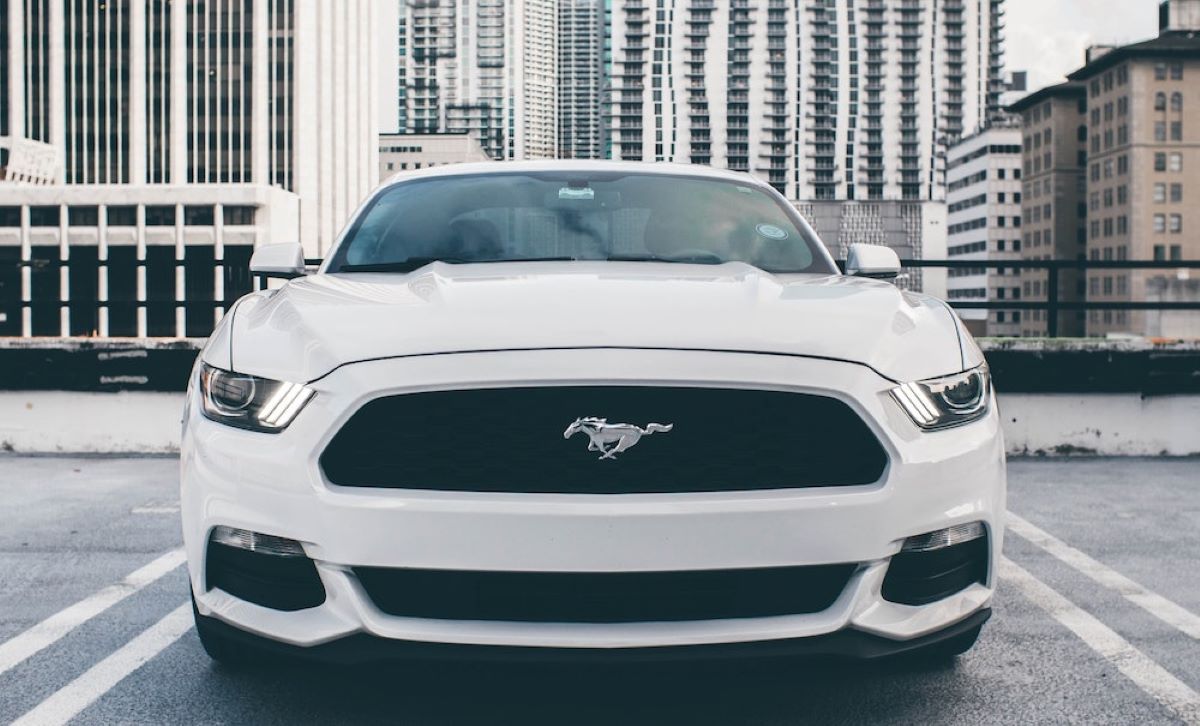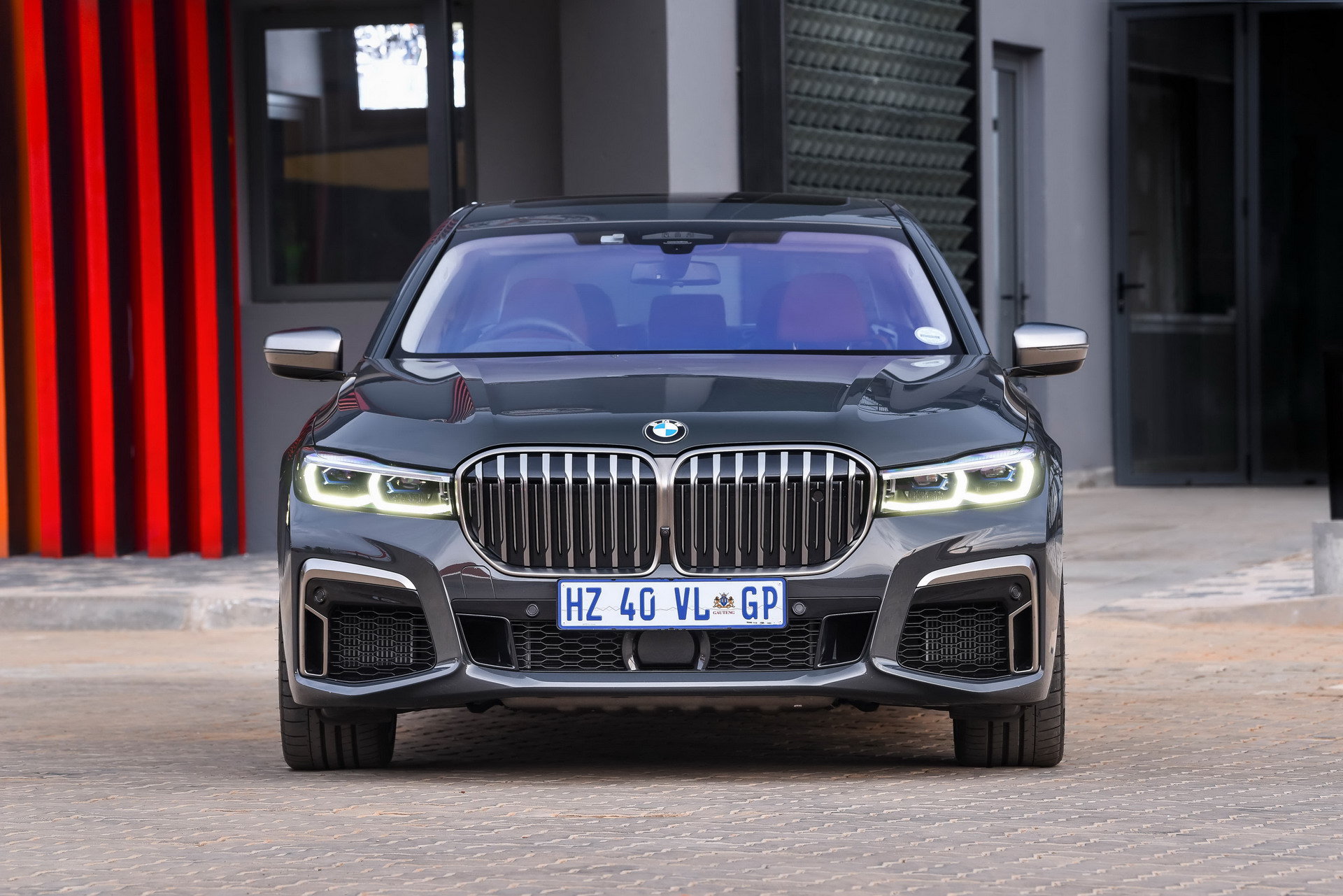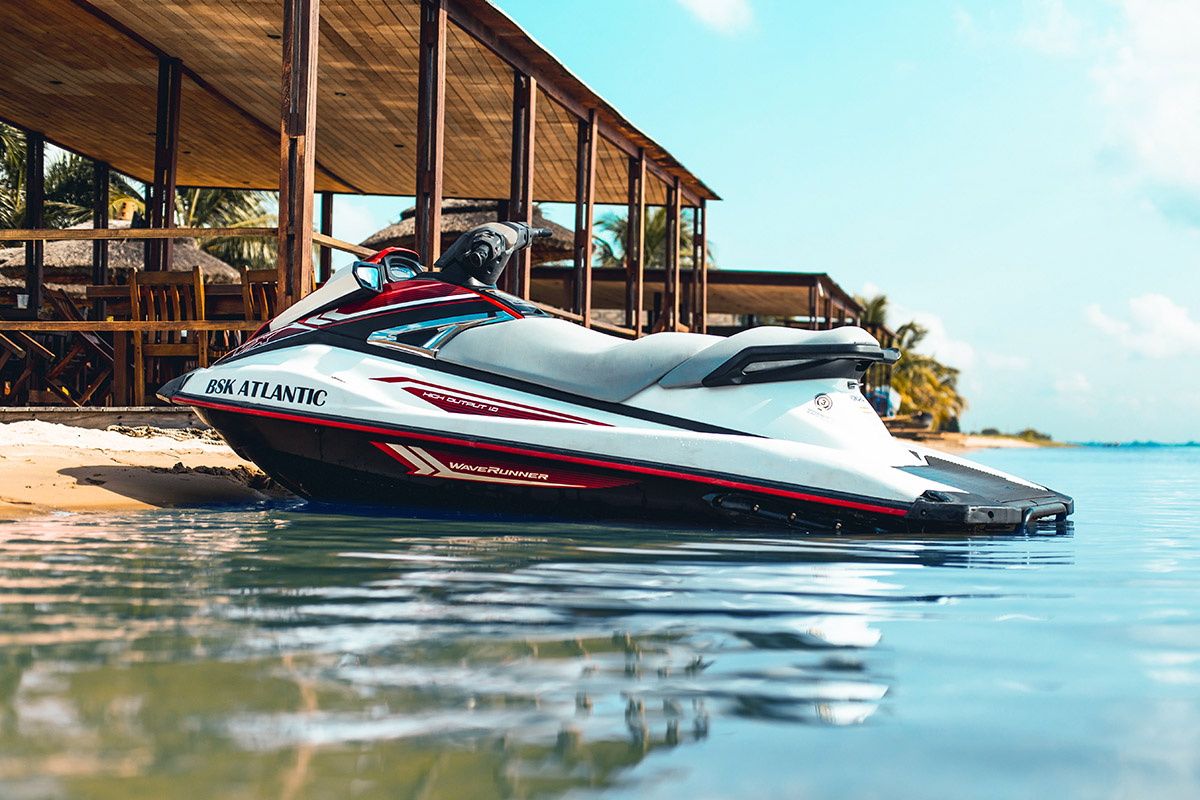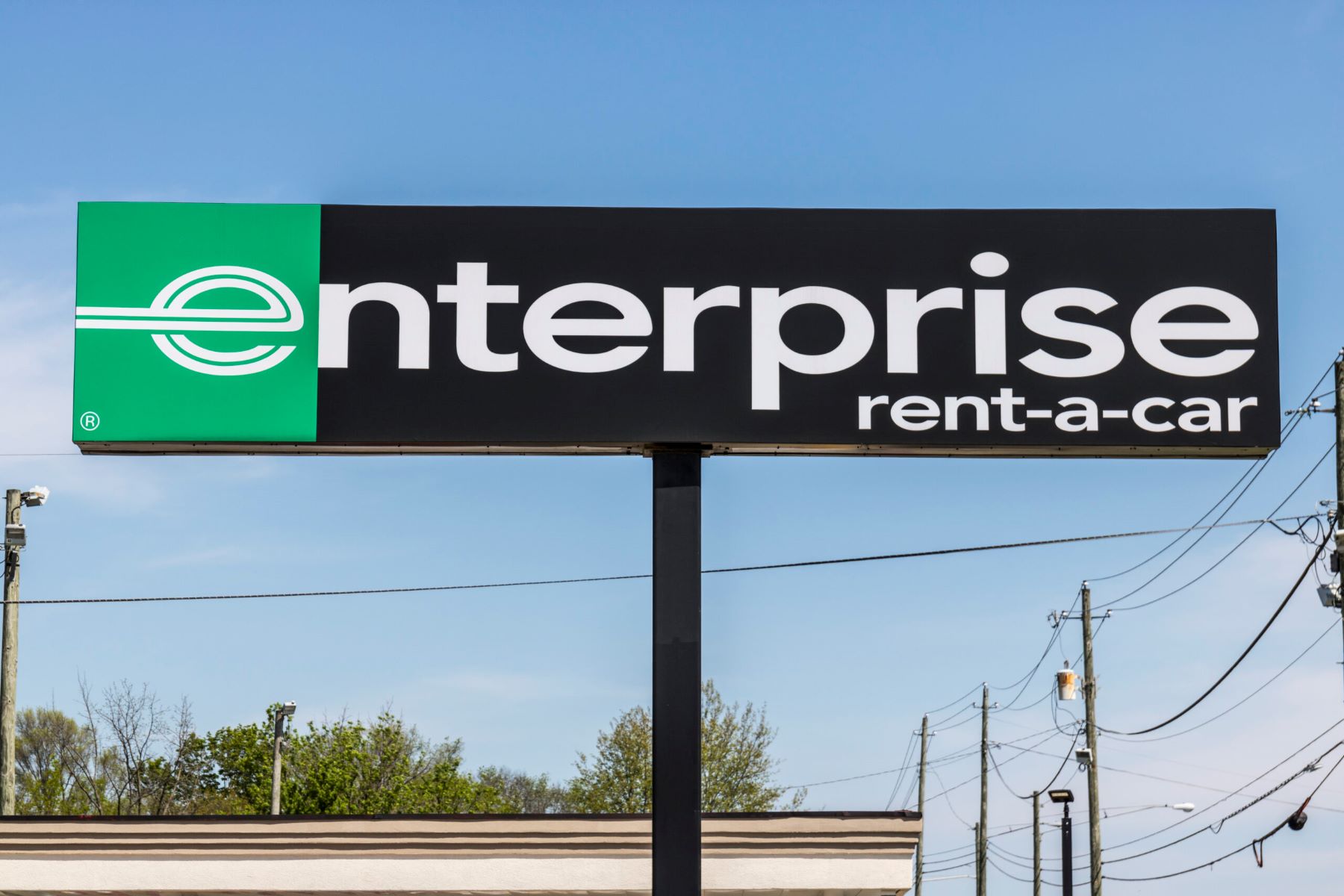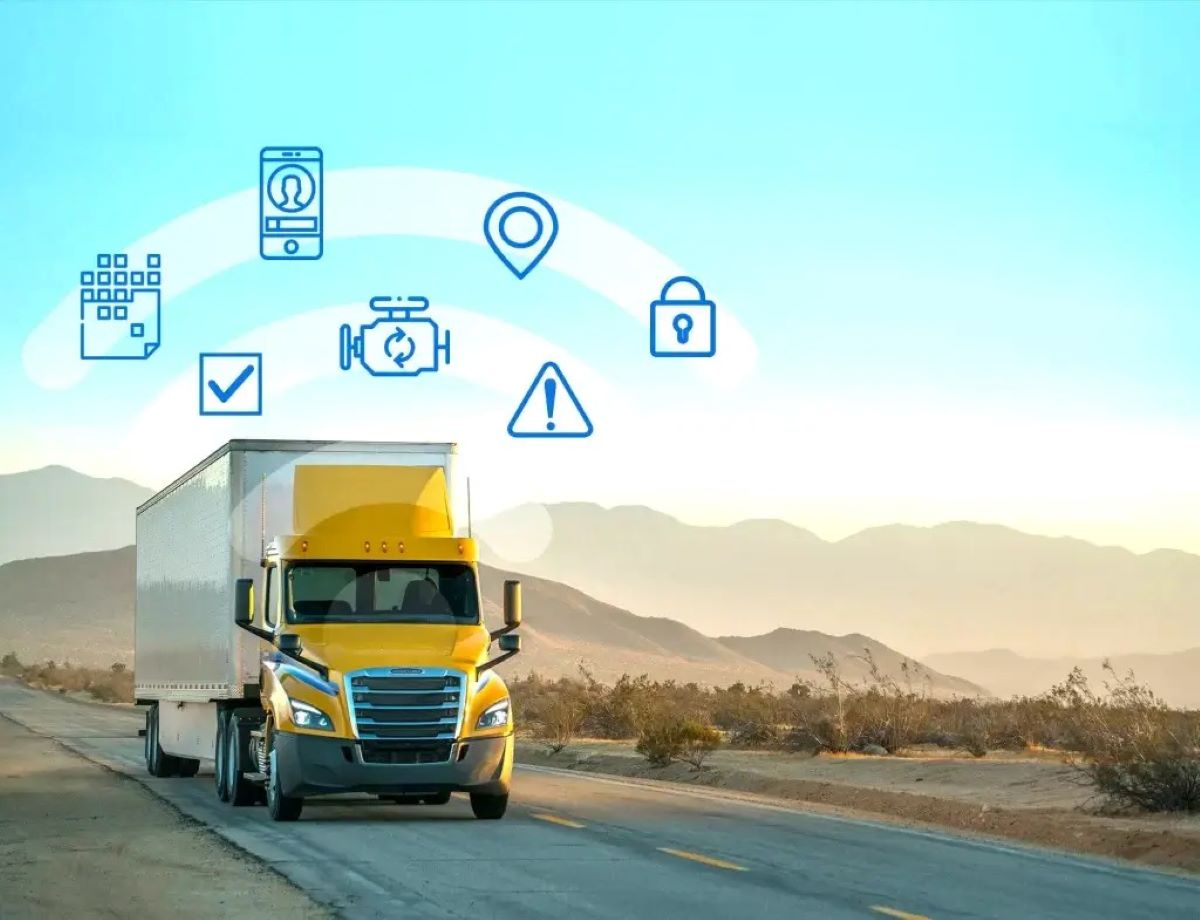

Finance
How Much Is Hotshot Insurance
Published: November 9, 2023
Looking for hotshot insurance? Find out how much it costs and get the best finance options to protect your business.
(Many of the links in this article redirect to a specific reviewed product. Your purchase of these products through affiliate links helps to generate commission for LiveWell, at no extra cost. Learn more)
Table of Contents
Introduction
Welcome to the world of hotshot trucking! If you’re a driver or a small business owner looking to haul smaller loads on a faster timeline, you’re probably familiar with the term “hotshot.” Operating as a hotshot trucker can be a lucrative venture, but just like any other business, it comes with risks. That’s where hotshot insurance comes into play.
Hotshot insurance is a specialized type of coverage designed specifically for hotshot truckers. It provides financial protection in case of accidents, damage to your vehicle, or liability claims resulting from your business operations. Whether you’re hauling goods locally or across state lines, having the right insurance coverage is crucial to protect yourself and your business.
As with any insurance policy, there are various factors that can affect the cost of hotshot insurance. The type of coverage you choose, your driving record, the value of your vehicle, and the type of cargo you transport all play a role in determining your insurance premium. Understanding these factors and knowing how to get the best insurance rates is essential for hotshot truckers.
In this article, we’ll explore the different types of hotshot insurance coverage, the factors that impact insurance costs, and provide tips on securing the best rates. Whether you’re just starting out in the hotshot trucking industry or looking to optimize your current insurance policy, this guide will help you navigate the ins and outs of hotshot insurance.
What is Hotshot Insurance?
Hotshot insurance is a specialized type of coverage tailored specifically for hotshot trucking operations. Hotshot trucking refers to the transportation of smaller loads or expedited deliveries using a pickup truck, cargo van, or a small straight truck. Unlike traditional long-haul trucking, hotshot trucking offers a more flexible and faster transportation solution.
Hotshot truckers typically operate as independent contractors or small business owners, delivering a wide range of goods such as construction materials, equipment, livestock, or even time-sensitive freight. Due to the unique nature of hotshot trucking, standard commercial truck insurance may not offer adequate coverage for the specific risks associated with this type of operation.
Hotshot insurance provides coverage for the various risks that hotshot truckers face while on the road. These risks include accidents, damage to the vehicle, theft, cargo damage, and liability claims arising from the operation of the business.
Hotshot insurance policies can be customized to meet the specific needs of the hotshot trucker. Some of the coverage options available include:
- Liability coverage: This protects hotshot truckers in case they are found responsible for third-party injuries or property damage. It covers the costs of legal fees, medical expenses, and property repair or replacement.
- Physical damage coverage: This provides protection for the hotshot trucker’s vehicle in the event of an accident, collision, or other physical damage. It covers the costs of repairs or replacement.
- Cargo insurance: This coverage protects the cargo being transported by the hotshot trucker. It provides compensation in case the cargo is damaged, lost, or stolen during transit.
- Uninsured/underinsured motorist coverage: This coverage comes into play when the hotshot trucker is involved in an accident caused by a driver who lacks adequate insurance coverage. It helps cover the expenses that the other driver’s insurance cannot.
Having hotshot insurance is not only essential for protecting your business and assets, but it is also a requirement in order to operate legally. The Federal Motor Carrier Safety Administration (FMCSA) mandates that all commercial motor vehicles, including hotshot trucks, must have valid insurance coverage to operate on public roads.
Now that we have a better understanding of what hotshot insurance is, let’s explore the factors that can impact the cost of this specialized coverage.
Factors that Affect Hotshot Insurance Costs
When it comes to determining the cost of hotshot insurance, several factors come into play. Insurance providers assess these factors to determine the level of risk associated with insuring a hotshot trucker and their business. Understanding these factors can help hotshot truckers better navigate the insurance landscape and potentially find ways to lower their insurance premiums. Here are the key factors that affect hotshot insurance costs:
1. Driving history and experience: One of the primary factors that insurance providers consider is the driver’s history and experience. A clean driving record with no accidents or violations indicates a lower risk and can result in lower insurance premiums. Conversely, a history of accidents or traffic violations can increase the cost of insurance.
2. Type of vehicle: The type and value of the vehicle used for hotshot trucking also affect insurance costs. More expensive vehicles may require higher coverage limits, leading to higher insurance premiums. Additionally, factors such as the age of the vehicle, safety features, and maintenance records may also influence the cost of insurance.
3. Cargo type and value: The type and value of the cargo being transported play a role in determining insurance costs. Certain types of cargo, such as hazardous materials or high-value goods, may require additional coverage or higher insurance premiums due to the increased risk associated with their transportation.
4. Operating radius: The geographic area in which a hotshot trucker operates also affects insurance costs. Insurance providers consider factors such as the distance traveled, driving conditions, and the level of traffic congestion in the operating area. Operating in high-risk areas or covering long distances may result in higher insurance premiums.
5. Deductible amount: The deductible is the amount that the insured party must pay out of pocket before the insurance coverage kicks in. Choosing a higher deductible can lower insurance premiums, but it also means the hotshot trucker will bear a higher financial burden in the event of a claim.
6. Claims history: A history of past insurance claims can impact the cost of hotshot insurance. Insurance providers consider the frequency and severity of previous claims to assess the likelihood of future claims. Those with a history of frequent or costly claims may face higher insurance premiums.
7. Business structure and size: The structure of the hotshot trucking business, whether it is a sole proprietorship or an incorporated entity, can influence insurance costs. Insurance providers may also consider factors such as the number of drivers, the business’s annual revenue, and the number of vehicles in the fleet when calculating premiums.
It’s important for hotshot truckers to discuss these factors with multiple insurance providers to obtain quotes and compare coverage options. By understanding how these factors impact insurance costs, hotshot truckers can make informed decisions to find the most suitable and affordable insurance coverage for their business.
Types of Hotshot Insurance Coverage
When it comes to hotshot insurance, there are several types of coverage that hotshot truckers should consider to ensure adequate protection for their business. While the specific needs may vary depending on the nature of the operation, here are the main types of hotshot insurance coverage to consider:
1. Liability Coverage: Liability coverage is a fundamental component of any hotshot insurance policy. It provides financial protection in case a hotshot trucker is found responsible for causing bodily injury or property damage to a third party. This coverage helps cover legal expenses, medical bills, property repairs, and other associated costs. It is crucial to have sufficient liability coverage to protect against potential lawsuits and financial liabilities.
2. Physical Damage Coverage: Physical damage coverage protects the hotshot trucker’s vehicle from accidents, collisions, vandalism, or theft. This coverage includes both comprehensive and collision coverage. Comprehensive coverage provides compensation for non-collision incidents, such as fire, theft, or weather damage. Collision coverage, on the other hand, covers damages resulting from collisions with other vehicles or objects.
3. Cargo Insurance: Cargo insurance is essential for hotshot truckers who transport goods for their clients. It provides coverage for the cargo being hauled in case of damage, theft, or loss during transit. Cargo insurance ensures that hotshot truckers do not bear the financial burden of replacing or repairing damaged cargo, which can be costly. The specific coverage limits and terms will depend on the type of cargo being transported.
4. Uninsured/Underinsured Motorist Coverage: This type of coverage protects hotshot truckers in the event of an accident caused by another driver who either has no insurance or insufficient insurance coverage. Uninsured/underinsured motorist coverage helps cover the medical expenses, vehicle repairs, and other losses when the at-fault party cannot afford to cover the costs themselves.
5. Bobtail Insurance: Bobtail insurance provides coverage for hotshot truckers when they are driving without a trailer or cargo attached to their vehicle. It offers protection during personal use or when driving to pick up or drop off a load. Bobtail insurance is especially relevant for hotshot truckers who may engage in both commercial hauling and personal driving.
6. General Liability Insurance: General liability insurance provides coverage for non-trucking-related incidents. It protects hotshot truckers from liability claims arising from accidents, injuries, or property damage that occur while on their premises or during non-trucking business activities. General liability insurance is particularly important for hotshot truckers who have their own office, warehouse, or other business facilities.
It’s important for hotshot truckers to assess their specific needs and consult with an insurance professional to determine the appropriate types and levels of coverage for their business. By understanding the different types of hotshot insurance coverage, hotshot truckers can ensure adequate protection and financial security for their operations.
How Much Does Hotshot Insurance Cost?
The cost of hotshot insurance can vary significantly depending on various factors specific to the hotshot trucker and their business. The type of coverage, driving history, location, and the value of the vehicle are just a few of the factors that insurance providers consider when calculating premiums. While it is challenging to provide an exact cost without knowing the specific details of a hotshot trucking operation, we can discuss some general considerations:
On average, hotshot insurance can cost anywhere from $3,000 to $8,000 per year, per truck. This estimate includes comprehensive coverage for liability, physical damage, cargo insurance, and other necessary coverages. However, keep in mind that this figure can vary widely depending on the factors mentioned earlier.
Some of the key factors that impact the cost of hotshot insurance include:
- Type and value of the vehicle(s): More expensive vehicles typically require higher coverage limits, which can result in higher insurance premiums.
- Cargo type and value: Hauling high-value or hazardous materials may require additional coverage or can increase insurance costs due to the increased risk associated with transporting such cargo.
- Driving history and experience: Clean driving records with no accidents or violations generally result in lower insurance premiums, while a history of incidents or traffic violations can increase costs.
- Operating radius: Insurance providers consider the distance traveled, driving conditions, and level of traffic congestion in the operating area. Operating in high-risk areas or covering long distances may result in higher insurance premiums.
- Deductible amount: Choosing a higher deductible can help lower insurance premiums, but it also means the hotshot trucker will assume a higher financial burden in the event of a claim.
It is important for hotshot truckers to shop around and obtain quotes from multiple insurance providers. Each provider has its own method of calculating premiums and may offer different coverage options. By comparing quotes and discussing specific needs with insurance professionals, hotshot truckers can find the most suitable coverage at the best rates.
It’s worth noting that while cost is an important consideration, hotshot truckers should also prioritize adequate coverage to protect their business and assets. Cutting corners on insurance coverage can leave a business vulnerable to significant financial risks in the event of an accident or liability claim.
Ultimately, the cost of hotshot insurance will depend on several factors particular to the individual hotshot trucker and their business. By understanding these factors and working with reputable insurance providers, hotshot truckers can find the right coverage that offers a balance between protection and affordability.
Tips for Getting the Best Hotshot Insurance Rates
When it comes to obtaining the best hotshot insurance rates, there are several strategies that hotshot truckers can employ. By keeping these tips in mind, you can potentially save money on your insurance premiums without compromising on the level of coverage. Here are some helpful tips for getting the best hotshot insurance rates:
1. Compare Multiple Quotes: Don’t settle for the first insurance quote you receive. Take the time to shop around and obtain quotes from multiple insurance providers. Each provider has its own pricing structure and may offer different discounts or coverage options. Comparing quotes will help you find the most competitive rates.
2. Maintain a Clean Driving Record: Your driving record plays a significant role in determining your insurance rates. It is essential to drive safely and maintain a clean record free of accidents or traffic violations. Insurance providers view drivers with clean records as lower risk, resulting in lower insurance premiums.
3. Consider Higher Deductibles: Choosing a higher deductible can help lower your insurance premiums. A deductible is the amount you agree to pay out of pocket before your insurance coverage kicks in. However, it is important to weigh the potential savings against the financial burden you may face in the event of a claim.
4. Invest in Safety Measures: Outfitting your hotshot truck with safety features such as anti-theft devices, GPS tracking systems, and dash cams can make your vehicle less prone to accidents or theft. Insurance providers often offer discounts for vehicles equipped with such safety measures.
5. Bundle Your Policies: If you have other insurance policies, such as homeowner’s or personal auto insurance, consider bundling them with your hotshot insurance. Many insurance companies offer multi-policy discounts, which can lead to significant savings.
6. Consider Increasing Coverage Limits: While it may seem counterintuitive, increasing your coverage limits can sometimes result in lower premiums. By demonstrating a higher level of financial responsibility, insurance providers may offer lower rates.
7. Review Your Policy Regularly: As your hotshot trucking business grows or changes, your insurance needs may evolve as well. Regularly reviewing your policy with your insurance agent can help ensure that you have the appropriate coverage at the best rates.
8. Work with an Independent Insurance Agent: Independent insurance agents work with multiple insurance companies and can provide you with a range of options. They have industry expertise and can help you navigate the insurance market to find the best rates and coverage for your specific needs.
Remember, while price is a crucial factor, it should not be the sole criterion when choosing hotshot insurance. Make sure to carefully evaluate the coverage options and terms to ensure that you have adequate protection for the unique risks associated with hotshot trucking.
By implementing these tips and working with reputable insurance providers, you can secure the best hotshot insurance rates that suit your business, budget, and coverage requirements.
Conclusion
Hotshot insurance is a vital aspect of running a successful hotshot trucking business. It provides financial protection against accidents, damages, liability claims, and other risks associated with the transportation of smaller loads on expedited timelines. By understanding the various types of coverage, the factors that affect insurance costs, and tips for securing the best rates, hotshot truckers can make informed decisions when it comes to their insurance needs.
When seeking hotshot insurance, it is important to compare quotes from multiple insurance providers. Factors such as driving history, type of vehicle, cargo type, and operating radius are evaluated to determine insurance premiums. By maintaining a clean driving record, investing in safety measures, and considering higher deductibles, hotshot truckers can potentially reduce their insurance costs without compromising coverage.
Regularly reviewing and updating your insurance policy, particularly as your business evolves, is essential to ensure that you have the appropriate coverage. Working with an independent insurance agent can help you navigate the insurance market and find the best rates and coverage options available.
While cost is a significant consideration, hotshot truckers should prioritize adequate coverage to protect their business and assets. Cutting corners on insurance coverage can leave a business vulnerable to financial risks in the event of an accident or liability claim.
As you venture into the world of hotshot trucking, remember that hotshot insurance provides essential protection, allowing you to focus on growing your business with peace of mind. By understanding your insurance needs, shopping around for quotes, and implementing the tips mentioned in this article, you can find the best hotshot insurance coverage that meets your requirements while fitting within your budget.


